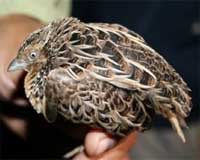| . |  |
. |
Doha (AFP) March 18, 2010 Polar bears, the global mascot in the fight against climate change, were denied a reprieve Thursday when a UN body shot down a US proposal to ban cross-border trade in the animals or their parts. In a vote at the Convention on International Trade in Endangered Species (CITES), meeting in Doha through March 25, the measure fell far short of the required two-thirds majority. The United States had called for a "precautionary approach," noting the International Union for Conservation of Nature (IUCN) classifies the animal as "vulnerable," with their numbers down by 30 percent in the past 45 years. "The current level of trade has a detrimental impact ... and may further stimulate the international market in countries that allow it, such as Russia," said Jane Lyder, head of the US delegation at the Doha talks. Recent data showed that as many as 700 of the bears may be killed illegally each year, especially in Russia, she told journalists. But opponents of the ban argued that the main threat facing the snow-white carnivore, the largest of the bear family, is climate change, not poaching or over-exploitation. There are currently 20,000 to 25,000 in the wild across Canada, Greenland, Russia, Alaska and Norway, and about 600 are legally harvested each year by indigenous peoples, especially the Inuit. Only Canada -- home to 65 percent of the global population -- allows exports, which are limited to about 300 specimens a year. They are killed mainly for their fur, teeth and bones, or sought as hunting trophies. Several states invoked the rights of aboriginal peoples for whom hunting the bears is a way of life and an economic lifeline. "Polar bears are a valuable source of food, and an important contribution to our livelihood," said an Inuit member of the Canadian delegation. "We have a lot to lose if polar bear trade doesn't exist any more," he told journalists. The polar bear has been registered since 1975 in Appendix II of the Convention on International Trade in Endangered Species (CITES), which allows controlled trade. Inclusion in Appendix I, as requested by the United States, would have totally banned exports. In 2008, Washington listed polar bears under the Endangered Species Act, ending importation to the US of trophies killed by sports hunters. Greenland imposed a total ban on exports the same year. The International Fund for Animal Welfare (IFAW) decried the outcome in Doha as a "death knell" for the bears. "This is a missed opportunity, a final chance to respond to threats" facing the bear, said Jeff Flocken, director of conservation group the Global Fund for Animal Welfare. Other environmental groups, however, said hunting for export is limited and well-managed, and that the ban would not boost the animal's chances for survival. "The polar bear does not meet any of the biological criteria for inclusion in Appendix I. Trade is not a significant threat to the species," said TRAFFIC, an NGO that monitors wildlife trade. Several NGOs said the drive to uplist the animal was largely "emotional." The final tally was 48 votes in favour of the Appendix I listing, 62 against and 11 abstentions, according to IFAW. The 175-nation CITES will vote on dozens of measures affecting trade in tuna, ivory, sharks and coral, among other plants and animals.
Share This Article With Planet Earth
Related Links Darwin Today At TerraDaily.com
 E-commerce in protected wildlife booming
E-commerce in protected wildlife boomingDoha (AFP) March 17, 2010 From ivory trinkets to live parrots, the Internet has become a virtual supermarket in imperilled species that is hard to track and even harder to crack, say experts. With a quarter of humanity coming online over the last 15 years, the scale of the problem has caught global wildlife police offguard, according to the 175-nation Convention on International Trade in Endangered Species (CITES), m ... read more |
|
| The content herein, unless otherwise known to be public domain, are Copyright 1995-2010 - SpaceDaily. AFP and UPI Wire Stories are copyright Agence France-Presse and United Press International. ESA Portal Reports are copyright European Space Agency. All NASA sourced material is public domain. Additional copyrights may apply in whole or part to other bona fide parties. Advertising does not imply endorsement,agreement or approval of any opinions, statements or information provided by SpaceDaily on any Web page published or hosted by SpaceDaily. Privacy Statement |